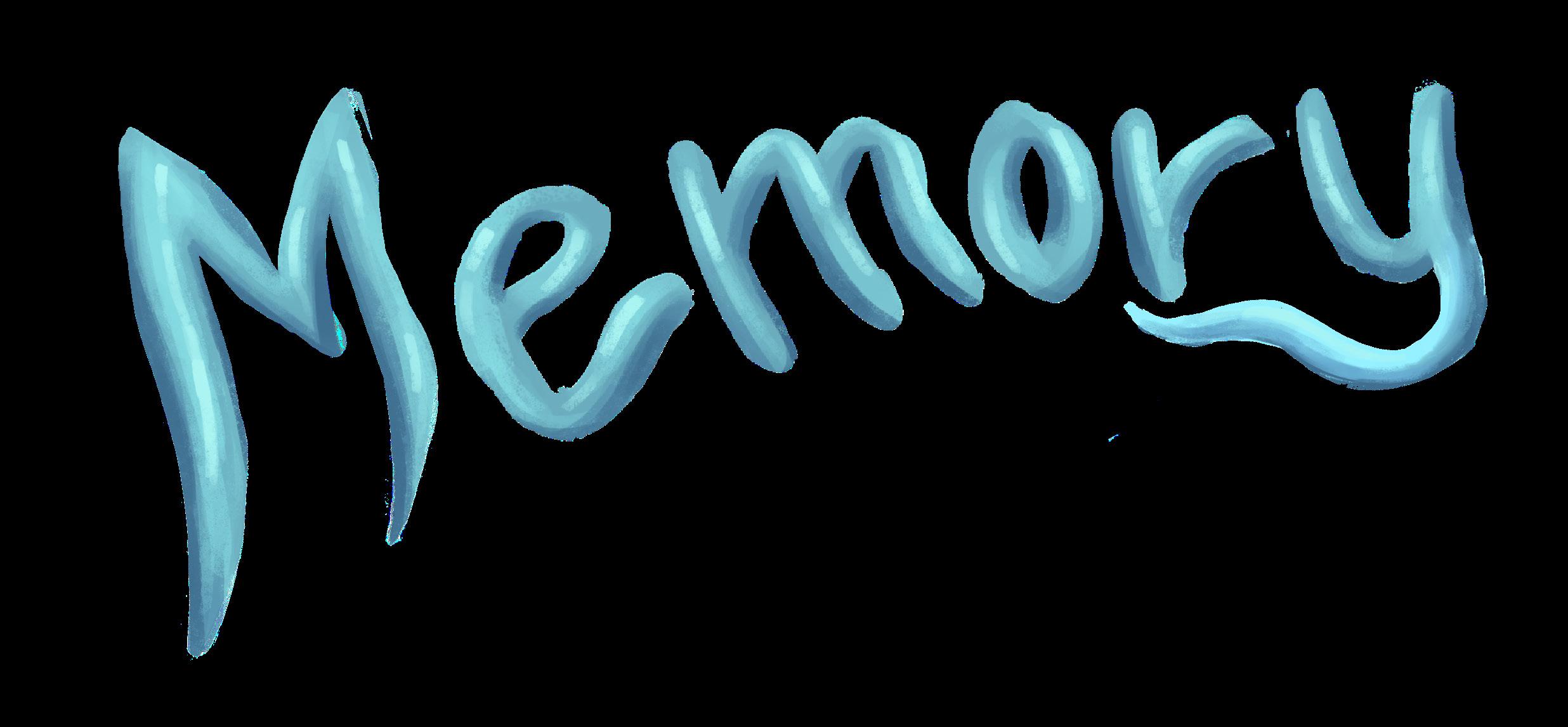
10 minute read
Lost in memory
Newman Staff Writer
Memory is a crucial component of the human experience, yet studies suggest that people forget over half of the information they learn within one hour. Although it can be frustrating to forget to complete an important assignment or tune into a decisive sports game, the ability to forget is actually instrumental in allowing humans to function the way they do.
Advertisement
While many fear the thought of losing memories, the concept of forgetting is not always a bad thing. In fact, as reported by Verywell Mind, a health and wellness website, many memories never make it to the long-term memory stage in the first place and those that do are often simplified to efficiently store memories for the future. Forgetting can also be attributed to a phenomenon known as interference. Because some memories compete and interfere with others, they are gradually forgotten.
According to Psychiatry News, forgetting can actually benefit cognitive and creative abilities that allow the mind to work more efficiently. For example, brains often disassociate when reading for long periods of time to help one focus on the story, which is scientifically considered a branch of memory loss, as claimed by Vice.
Forgetting is also a normal process of aging that generally occurs to those 65 years old and older. Help Guide reports that at a certain age, the brain becomes less capable of producing new brain cells, which can lead to remembering less and less. Nevertheless, there are always ways to reduce memory loss such as training and improving cognitive skills at a young age, remaining physically healthy, consistently getting enough sleep and staying connected with others through social activities.
“I always thought diseases that target memory loss were the worst kind of pain. The thought of a family member forgetting my identity is tragic, but it is nice to learn how there is a bright side to everything. If we remembered absolutely everything in our lives, there would be too much for the brain to process and it would become unhealthy for us,” Junior Parmis Broumandi said.
On the other hand, excessive forgetfulness can often be a sign of a disease or condition that targets memory, such as Alzheimer’s or amnesia, especially when people grow older. According to the National Institute on Aging, Alzheimer’s—the most common type of dementia—is a disorder that gradually destroys the brain’s memory and cognitive skills to the point that it is unable to carry out simple tasks such as conversing and recognizing faces. Meanwhile, amnesia is the loss of memories that leads to individuals forgetting their own identity, as stated by Mayo Clinic.
Both conditions have varying levels of severity, but for extreme cases, Penn Medicine found that memory loss can stimulate mental health problems such as bipolar disorder or schizophrenia. The loss of memory can also affect patients’ loved ones because in the later stages of memory loss, people may no longer be able to recognize family members or remember the relationships they once had.
As stated by Medical News, the brain can instinctively block out memories after undergoing overwhelming trauma as an attempt to protect itself. While the safeguard can be helpful in the short term, memory suppression is temporary, so those who block out trauma usually end up receiving painful flashbacks or intrusive thoughts.
“The idea of completely forgetting something is scary, but it is good that the brain is powerful enough to get rid of a memory that is extremely traumatic. I can see how memory suppression could be beneficial momentarily, but therapy is probably the best solution to combat flashbacks when they begin to occur,” Senior Daria Kouzminova said.
Overall, forgetting is a complex phenomenon that plays a crucial role in our lives. Although the idea of memory loss may seem frightening, memories are constantly changing and evolving, and the act of forgetting can be helpful to make room for new memories. By taking steps to reduce memory loss, one’s memories can remain intact for years to come.
Phone passwords. The formula for the area of a circle. Eating ice cream with friends. Whether it is information, events or nostalgia, memory is the heart and essence of our lived experience that connects and makes meaning of the individual events of our lives.

Memory formation can be divided into three chronological stages: sensory, short-term and long-term. Lasting approximately one second, the sensory stage consists of identifying a stimulus and interpreting it. After information is registered from the sensory organs, data already stored in long-term memory is used to categorize the stimulus. For example, after seeing a round red object with a green stem on top, prior knowledge allows one’s brain to classify it as an apple. There are several types of sensory memory. The most well-known is iconic memory, or information gathered through sight like text or images. Other types of memory include echoic memory, like remembering a musical tune, and haptic memory, which is recalling the texture of an object.
Once a stimulus is interpreted, the sensory information is converted into a short-term memory, where it is stored temporarily in the hippocampus, the part of the brain that processes memory and emotion. The information is manipulated for a variety of cognitive tasks: making a decision, understanding a concept or performing a calculation. Information can be pulled from long-term memory to aid in this process; for example, recalling a formula is crucial for performing a mathematical calculation.

Sleep is essential for converting short-term memories to long-term memories by saving old memories and preparing the brain to receive new information. A study by Matthew Walker, a professor of neuroscience and psychology at UC Berkeley, revealed that participants who took an afternoon nap were 20% better at remembering face-name pairs than those who stayed awake. Specifically, non-rapid eye movement (NREM) sleep allows short-term information in the hippocampus to more easily be transferred to the cortex, where long-term information is stored. NREM sleep is often associated with factual recall, while rapid eye movement sleep helps with problem solving. Getting a good night’s sleep may help students remember more on an exam, whereas pulling an all-nighter would be counterproductive.
“I make sure to get a full night’s sleep if I know I am completely prepared for an exam. Even if I need to study, I still make sure to sleep before 2 a.m. to ensure I am able to recall facts during the exam,” Junior Rohan Talwar said.
Yet memory can be more complex than factual recall. Nostalgia, the mysterious joy that comes unbidden when running into an old friend or hearing a familiar tune, is more than sensory memory: it is episodic, resulting from a combination of sensory and emotional memory. Memories from childhood tend to be the most reinforced, as people form their first connections between objects in the real world during this time. But nostalgia is more than a temporary feeling of joy—scientists have found that nostalgia helps individuals cope with stress and find meaning in their lives. According to online magazine Inverse, nostalgia motivates people to pursue their goals in life and engage in prosocial behavior. Notably, looking at old pictures was found to help soldiers returning from war deal with depression and homesickness.
Furthermore, memory is often recognized by students, parents and teachers as a significant aspect of education. However, a greater emphasis could be put onto working memory, which allows students to process and draw connections between a new concept and an old one in the classroom.

According to a study conducted by the University of Strathclyde, a public research university in Glasgow, Scotland, emotion strengthens memories, so a possible tactic to help students remember facts in the long run is incorporating humor in lessons.
“I write down assignment deadlines to free my memory of cognitive load. Good analytical skills sprinkled in with a decent memory allows one to better comprehend concepts; having a strong memory by itself is not enough to learn new information,” Senior Ishir Garg said.
While having a strong recollection may help students get ahead in school, memory encompasses countless other aspects of everyday life as well. Rather than trying to remember distinct events, the brain always seeks to find connections between pieces of information, creating meaning in an otherwise meaningless life.

Good Pizza, Great Pizza
Suvia Li


Opinions Editor
After beating me at Word Hunt, my cute friend Inseo sent me an iMessage sticker of a muscular cartoon man dressed in a white chef’s hat and apron, laughing menacingly. Inseo informed me that this man was the infamous antagonist Alicante from Good Pizza, Great Pizza—a restaurant simulation game launched in 2014. Intrigued by the character, I decided to download the game.
Good Pizza, Great Pizza’s premise is simple: Users become a new pizza shop owner, learning to take orders from customers, assemble toppings and bake pizzas. The game cycles through 100 unique characters, including Dracula and Elvis Presley, who walk into the shop one at a time and place an order. Deciphering the often-ambiguous orders of the customers is a fun challenge. For example, one of my customers asked for a pizza that would help lower their risk of heart disease, type 2 diabetes, obesity and cancer “...with basil.” After guessing the type of pizza desired, I manually assemble the order by spreading sauce and cheese onto the dough, adding toppings like eggplant and mushrooms, baking the pizza, slicing it and placing it in a box.
The game is organized into chapters, each of which are composed of about 25 days and cover different developments in the restaurant’s storyline—such as attending pizza convention and facing off against new antagonists. Each day lasts 12 hours and at the end of each day, players are shown a summary of their finances. Cash can be used in the game’s shop to unlock more toppings, purchase furniture and decorations—I secured a skinny cactus and a retro neon open sign—and hire helpers to complete tasks such as sprinkling pepperoni.
The game’s art style is comforting, with a warm color palette featuring sunset orange and pastel pink. Additionally, there are whimsical sound effects that add to its relaxed ambiance: the soft plops of placing toppings on pizza, the gibberish that customers communicate in and the gentle and calming soundtrack.
Playing Good Pizza, Great Pizza has been an enjoyable experience—from its delightful design to its enigmatic characters, it is perfect for anyone looking for a fun and easy-to-learn game.
Good Pizza, Great Pizza (5/5) how app-ealing was it? of printing was invented by Dr. Hideo Kodama, who created a rapid prototyping machine that constructed items layer by layer with a resin that could be hardened under UV light. Since Kodama’s invention of the first 3D printer, 3D printing technology has evolved immensely and become extremely popular.
In the professional sphere, 3D printing’s popularity can partly be attributed to its reduced manufacturing costs, as stated by EOS, a 3D printer manufacturer. When producing complex items, multiple molds are often required. Once each element of the product leaves its mold, additional labor is needed to combine them. Purchasing a 3D printer can be costly, but it is capable of creating more complex pieces without a mold, omitting the need to combine different parts of an item later on and reducing the chances of product failure caused by incorrect assembly.
Although 3D printers are commonly used for creating smaller objects such as prototypes or replacement items, it is now possible for individuals to obtain a powerful printer that can create massive structures. According to NPR, architectural designer Leslie Lok recently collaborated with Germany-based printing provider Peri 3D Construction to construct the first ever twostory 3D printed house. The house is being built using a machine that exudes a wet concrete mix from its nozzle and slowly layers the material. Currently, it is halfway through a twoyear construction process. Lok plans for her own design firm, Hannah, to expand the scale and efficiency of their 3D printed homes and hopes that they can be a potential solution to pressing construction challenges such as labor shortages and natural disasters.
Quotebox:What doesthefuture holdfor3D printing?
“Though we are still decades away from seeing personal, affordable 3D printers in every home, many artists are already experimenting with 3D printing; for example, designer Sophy Wong prints futuristic, science fiction-inspired costumes and fashion pieces.”
— Senior Austin Caroll
non-renewable resources, but they are saving expensive material budgets, becoming cheaper than other conventional methods. I would definitely look into purchasing a 3D printed home one Adrian Oshana said. 3D printing is also playing an increasingly important role in the medical world. It has been implemented in order to create custom prosthetics that reach amputees sooner, at a cheaper price and with the same level of functionality as traditional prosthetics; special surgical instruments which can be printed at extremely small sizes to perform as precisely as possible; detailed anatomical models on which doctors can practice complicated procedures before operating on a patient and tissues and organoids that can be used for medical research. However, 3D printing is not limited solely to the medical and construction fields. Some individuals are constructing unique designs with their own home 3D printers. These are cheaper than professional printers—home printers cost around $1,000 while professional printers can reach heights of $30,000—and
“In the professional sphere, 3D printing’s popularity can partly be attributed to its reduced manufacturing costs...” organs and prosthetics printed to match the patient’s body. 3D printing may also become important in architecture, as it could drastically reduce labor costs in construction.”
Considering that the process has been moving smoothly, 3D printing could potentially help with the housing crisis, which has been plagued by rising costs. As society is often looking for ways to improve affordability, there have been multiple attempts to replace traditional homebuilding materials with 3D printed ones. Insurance comparison site The Zebra states that over the past few years, construction workers have used 3D printers to build small sections of homes such as walls or basic foundation pieces. Many are looking towards following the same route, considering that 3D printed homes can save an
“I have purchased 3D-printed alternatives for licensed lightsaber replicas that were a fraction of the price of the traditional products. The quality and durability felt similar, so 3D printing goods could be a cost-effective way of producing products for developing countries.”
—Sophomore Ashton Ancheta
achieve results comparable to the $50,000 printers of the previous decade. Home printers may require an item to be reprinted multiple times before coming out just right, but this can be an attractive factor for those looking into 3D printing as a hobby, since more reprints means more time spent experimenting with printing. Professional printers differ from this approach: They are built for efficiency and to save time, both of which can be reflected in their prices.
“I find 3D printing to be a good way to pass time and relieve stress. I design figurines and watches with a graphic design software on my computer, and the printer constructs what I draw in a few hours,” Aditya Nair said.
The growing popularity of 3D printing indicates the technology’s versatility and potential; it may help improve efficiency, sustainability and quality of life across many social spheres. As it becomes more accessible, more individuals may begin to explore the creative possibilities behind it as well.










